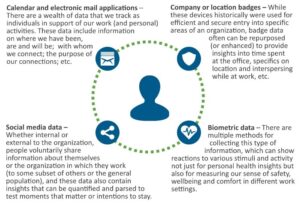What will be the top workforce analytics challenges of the new decade? Based on the flurry of activity and press on various topics, there are already some early contenders for top workforce analytics priorities:
- Exposing the power of “social” or organizational networks at work
- Creating an actively managed and personalized employee experience
- Addressing real-time opportunities for development and performance improvement
- Unpacking the assignments, backgrounds, competencies, etc., that make leaders more successful
- Linking diversity and inclusion efforts to their organizational impact
At the same time, it is worth noting that some traditional topics show no sign of waning. Two such research areas are:
- Finding and attracting top and, in many cases, uniquely skilled talent
- Retaining high performers
Perhaps, these topics stand the test of time because they are persistent challenges for organizations that will not go away, no matter what changes take place in the broader economy, labor markets, etc. In essence, the establishment and retention of an employment relationship provides substantive and significant value under most, if not all, circumstances. Few would argue this premise.
Just because a topic is “old” doesn’t mean that there aren’t new advancements to be considered. As a tangible example, we revisit the challenge of retaining high performers and look at two key approach advancements to explore opportunities for the upcoming decade.
Tried-and-True vs. Emerging Data Sources
While we’ve had a long history of examining indicative data and foundational survey information to predict both drivers of turnover and associated turnover risk, the next decade will see additional types of data—and related methods—become more mainstream for turnover (and other) analyses.
- Tried-and-true data sources generally rely on the existing data in the core HRIS, payroll databases and performance systems—with some extending into talent acquisition, learning, education and other specific HR systems and potentially engagement and other survey datasets based on their relative availability, accuracy and frequency.
- Emerging data sources aren’t necessarily new, but they do tend to give rise to heated debate with HR analytics’ audiences. Should you, or should you not, use: (1) Calendar and electronic mail application data, (2) Company or location badge data, (3) Social media data and (4) Biometric data?

While these measurements are potentially possible and, to varying degrees, reliable, their usage may have unintended or negative consequences on engagement, inclusion, and the like, not to mention the ethics debates on whether these data should be harnessed, even if employees are notified of the organization’s intended purpose. Between these concerns and the inherent questions related to the efficacy of the end result, many organizations have been cautious in pursuing these types of data sources to date.
The reality is that, as people become more desensitized to the usage of these emerging data sources in other dimensions of their lives, this type of data usage will become more commonplace in the corporate environment as well. As such, HR likely will increase its own application of these data over time. This evolution, combined with the value of the potential insights, will lead to broader data consideration, and the conversation may focus more on protecting confidentiality (similar to how we already treat engagement data) and clarifying the intended purpose (to manage employee understanding and provide reassurance) vs. whether to include these sources at all.
Traditional vs. “Innovative” Actions
Here too, traditional approaches are such for a reason. For example, there is persistent and strong evidence in turnover research that age, tenure with an organization and career (or pay) level impact turnover likelihood—albeit inter-correlated in some cases. That said, these variables may not be practical from an action planning standpoint, as there are limitations on what an organization can, or should, pursue to address these types of core turnover drivers.
- Traditional actions focus on generalized assumptions about workforce preferences and are typically oriented to employees vs. other types of employment relationships. Presumptions often are made that more is better vs. analyzing the trade-offs of different actions on the net outcome in question. A classic example would be to assume that more pay will lower turnover. Depending on the drivers of turnover and the way pay adjustments are delivered, this intended outcome is by no means guaranteed and tends to come at a steep cost.
- Innovative actions can come in the form of “fast fail” tests of different potential interventions (still based on evidence-based insights), “challenge sessions” for bottoms-up solution development and end-user ownership of their own retention drivers, as examples. All of these methods—and others—are designed to shift leaders from doing what they’ve always done and to engage non-traditional audiences in the process. As an example, we often see manager changes as a risk factor in our predictive turnover analytics. Rather than assuming that the number of manager changes should be monitored and minimized, an organization can engage employee cohorts at key moments that matter during a manager transition to test the types of activities and interactions that improve the retentive impact of these transitions.
To drive the maximum value from the data consolidation and more advanced analytics efforts to which HR functions aspire (if not currently undertake), it will be critical to act on the evidence differently as well. Yes, the evidence should allow HR to be more confident and efficient in its decision-making process. Equally, it should challenge us to look beyond traditional solutions to ensure that we consider innovative actions to provide the most value to the organization.
Evolving Approach to Workforce Analytics
A lot might change in the coming decade, and we explored two potential advancements here in the context of turnover research:
- New data sources facilitated by accessibility of data and increasing insensitivity—if not acceptance—of broader data usage
- New and innovative actions based on non-traditional idea generation and untapped opportunities for change
It should be noted that there are other factors that also will influence HR’s analytics agenda over the next decade, including:
- New workforce challenges based on changing fundamental employment relationships (e.g., direct employees, independent contractors, third-party providers and joint ventures)
- New HR priorities stemming from further globalization, diversity and internal “customer” expectations for personalization
- New analytic methods made more mainstream through the power of technology and increasing practice of predictive analytics in HR
With all of these new possibilities, we still are likely to face some of the same challenges, given the fundamental principles of labor economics, human behavior and organizational design. As such, we equally need to be prepared to raise our game in analyzing and addressing traditional HR challenges in new ways.




